What happens between the fights. The route choice analysis in turn based roguelikes
Lately I've been exploring different approaches to handling the periods between encounters in turn based roguelike games.
These sections of the game are critical for good pacing as well as providing context to the whole game – plot, lore and small details can be added here so the player can feel more immersed.
Additionally, this is a good way to introduce a secondary gameplay loop, closely connected to the core gameplay.
So far, I've managed to find a few major types of these parts of the game:
1. The hub area

Here both the player and his character can rest and recover. It seems to be an optimal "safe space" to have a breather after a hard bossfight. Although it can be a great place to shop, heal and train, making players visit the hub area too often will cause too much downtime.
What I like about this approach is the mental breather for the player himself. He can be sure the game is saved, no immediate threat is coming and he can decide when to leave the safe area.
2. The node map screen
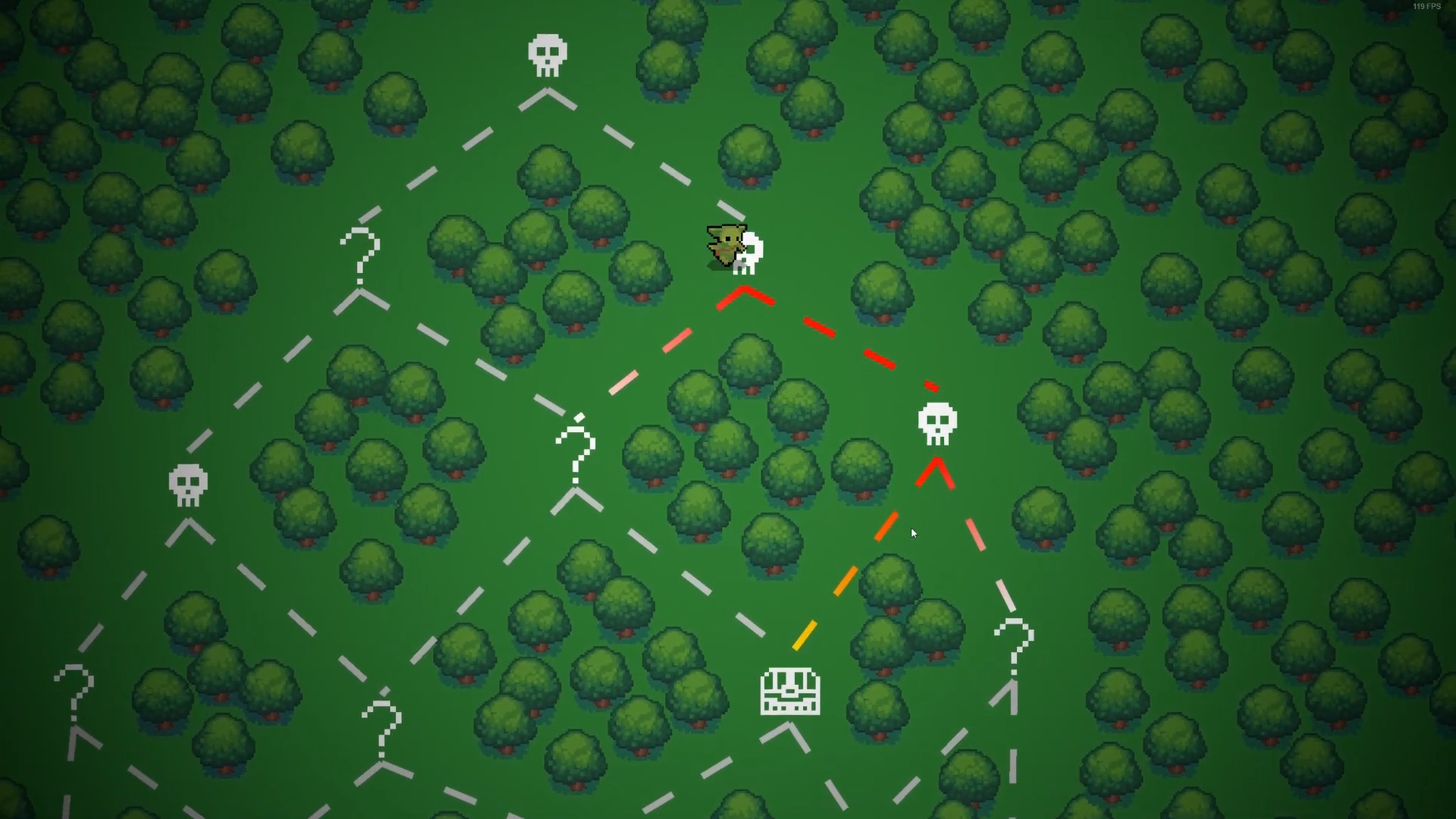
Here you can plan your next steps and see what lies ahead. It is more of a planning tool, than a breather zone. After all, as soon as you leave current node, next will open. It greatly improves the pace of the game minimizing the downtime, while keeping a strategic layer in the game. It seems to be a good fit to roguelike or session-based games where you do not want to break the flow of the main gameplay loop. Although, sometimes it may be too limiting if there are only a few node types on the map.
3. The full map screen
Great for adventure type games where you want to let the player explore the world. The downtime between fights increases greatly, but it might be a good thing if your game is not only about fighting. Also is a great addition for the story-heavy games.
4. Choose your path system
This one reduces the long term planning, but adds the layer of management. You do not know what is coming up, but you know what you didn't choose last time – giving you an option of saving some beneficial action until later in the game. This can also be harmful – you can get a hard encounter that will be a dead weight you can not avoid you pick it. An interesting way of handling the between-battle period, but a bit limiting
5. Event queue system
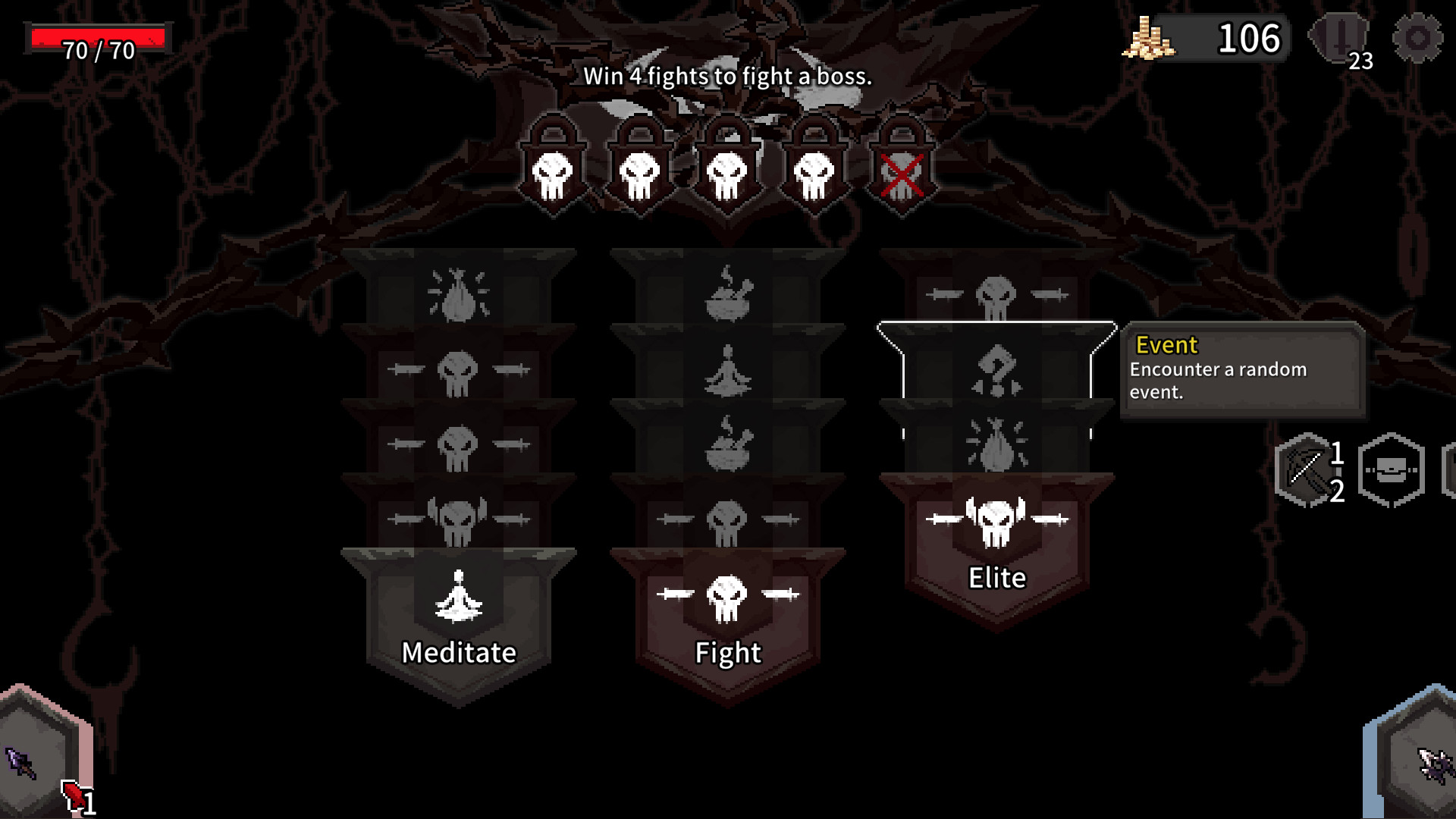
This is an unusual and interesting option – every time you get to pick one kind of action, but you enjoy both the benefits of the map (predictable route) and the path selection (keep unused actions for later). Definitely one of my favourites mechanically-wise.
6. The exploration deck system
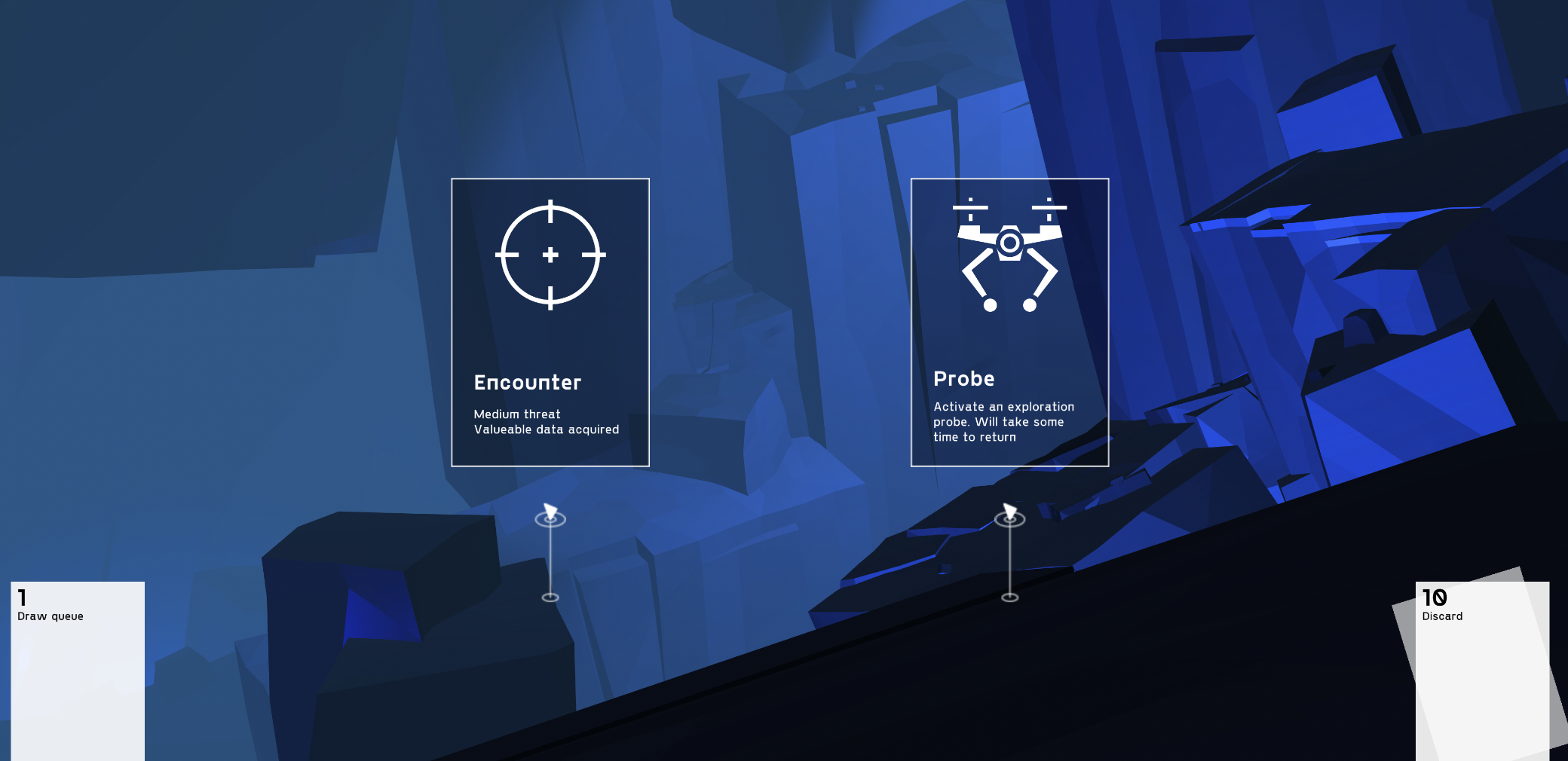
The system I came up with during the creation of my roguelike game. A synergy of deck-building and choose-your-path screen. You start with a deck of average cards, but during each run you can add new exploration cards to your deck, as well as remove the old ones. Some enemies can even add detrimental exploration cards to your deck. I continue to improve this system, would love to hear your thoughts about it.
What other ways to handle the periods between fights do you know? Did I miss some really original ones?
Files
The Unders_core
The sci-fi roguelike deckbuilder
| Status | In development |
| Author | Kresent |
| Genre | Card Game |
| Tags | 3D, Deck Building, Exploration, Low-poly, Roguelike, Roguelite, Sci-fi, Tactical, Unity |
More posts
- Balancing the early gameJul 17, 2022
- Adding more lore through an ingame encyclopediaJul 10, 2022
- Upgrades, upgradesJul 03, 2022
- Working on biomes and exploration scenesJun 29, 2022
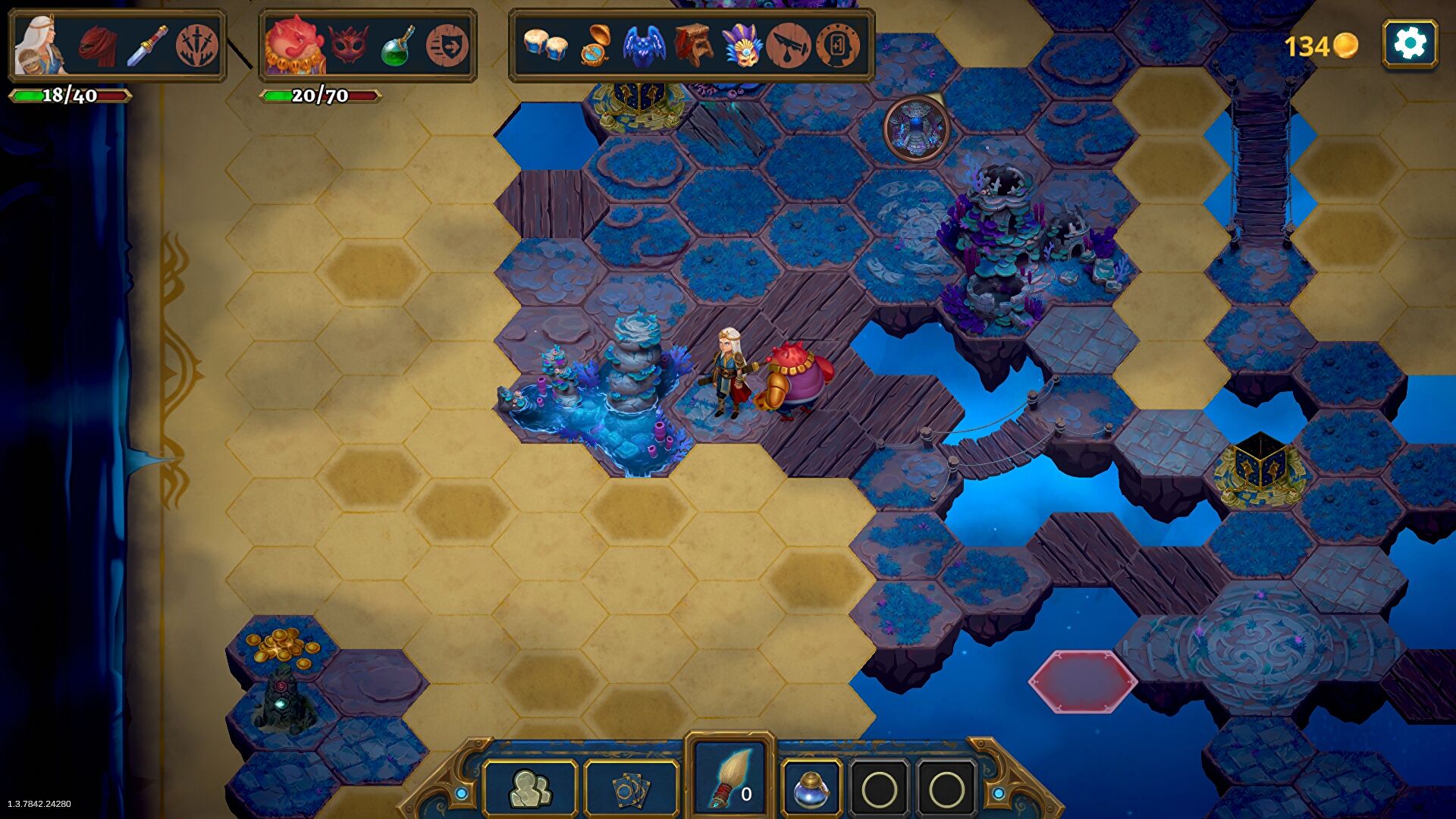
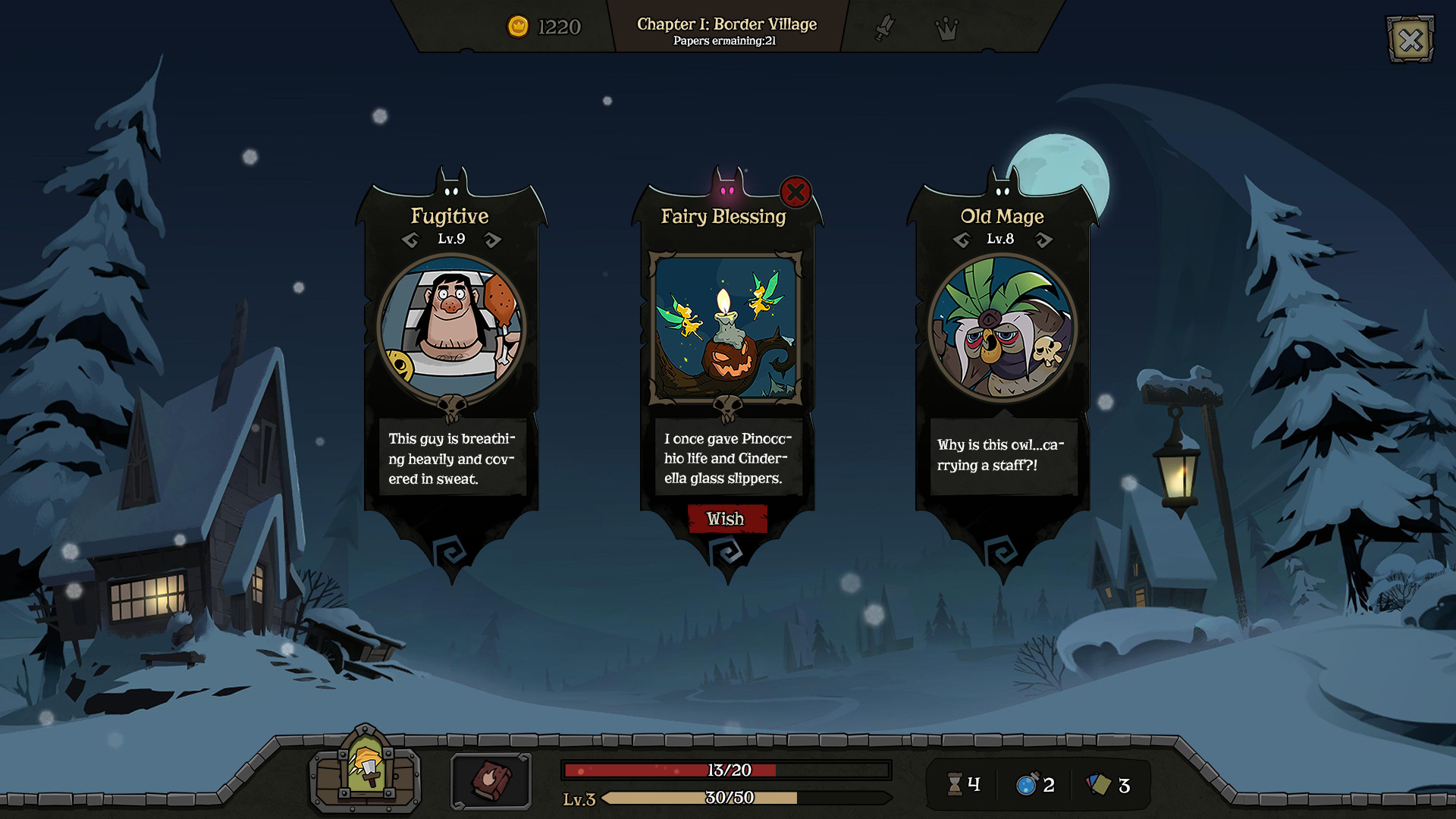
Leave a comment
Log in with itch.io to leave a comment.